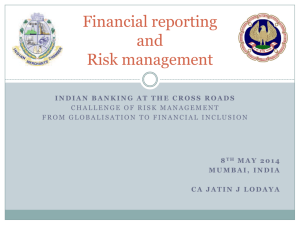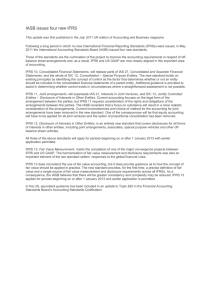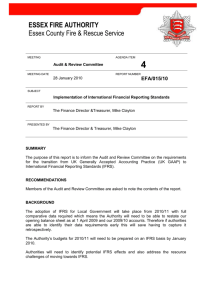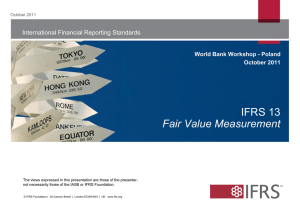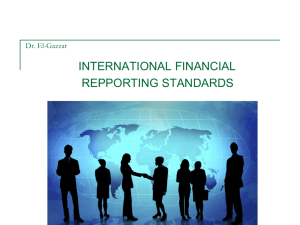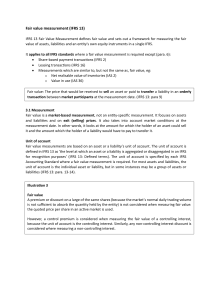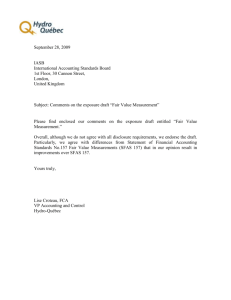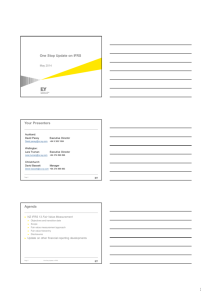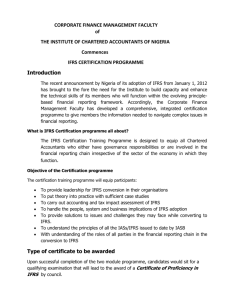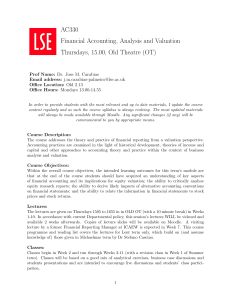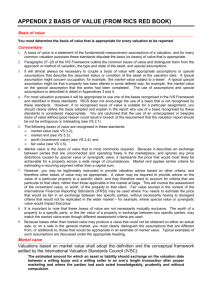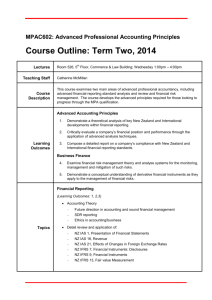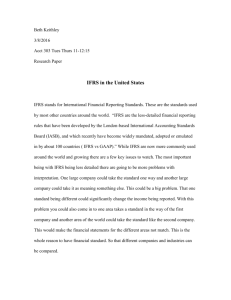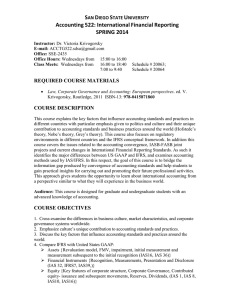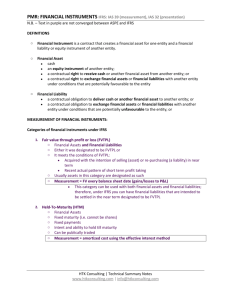'ENTRY' of the 'EXIT' price
advertisement
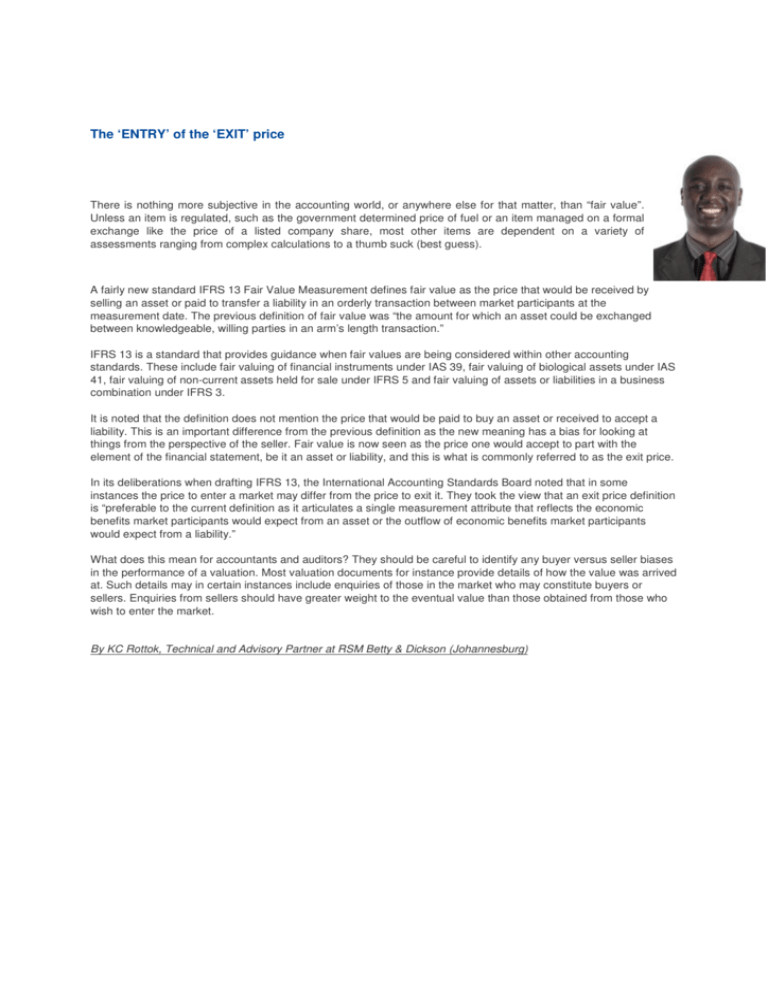
The ‘ENTRY’ of the ‘EXIT’ price There is nothing more subjective in the accounting world, or anywhere else for that matter, than “fair value”. Unless an item is regulated, such as the government determined price of fuel or an item managed on a formal exchange like the price of a listed company share, most other items are dependent on a variety of assessments ranging from complex calculations to a thumb suck (best guess). A fairly new standard IFRS 13 Fair Value Measurement defines fair value as the price that would be received by selling an asset or paid to transfer a liability in an orderly transaction between market participants at the measurement date. The previous definition of fair value was “the amount for which an asset could be exchanged between knowledgeable, willing parties in an arm’s length transaction.” IFRS 13 is a standard that provides guidance when fair values are being considered within other accounting standards. These include fair valuing of financial instruments under IAS 39, fair valuing of biological assets under IAS 41, fair valuing of non-current assets held for sale under IFRS 5 and fair valuing of assets or liabilities in a business combination under IFRS 3. It is noted that the definition does not mention the price that would be paid to buy an asset or received to accept a liability. This is an important difference from the previous definition as the new meaning has a bias for looking at things from the perspective of the seller. Fair value is now seen as the price one would accept to part with the element of the financial statement, be it an asset or liability, and this is what is commonly referred to as the exit price. In its deliberations when drafting IFRS 13, the International Accounting Standards Board noted that in some instances the price to enter a market may differ from the price to exit it. They took the view that an exit price definition is “preferable to the current definition as it articulates a single measurement attribute that reflects the economic benefits market participants would expect from an asset or the outflow of economic benefits market participants would expect from a liability.” What does this mean for accountants and auditors? They should be careful to identify any buyer versus seller biases in the performance of a valuation. Most valuation documents for instance provide details of how the value was arrived at. Such details may in certain instances include enquiries of those in the market who may constitute buyers or sellers. Enquiries from sellers should have greater weight to the eventual value than those obtained from those who wish to enter the market. By KC Rottok, Technical and Advisory Partner at RSM Betty & Dickson (Johannesburg)

